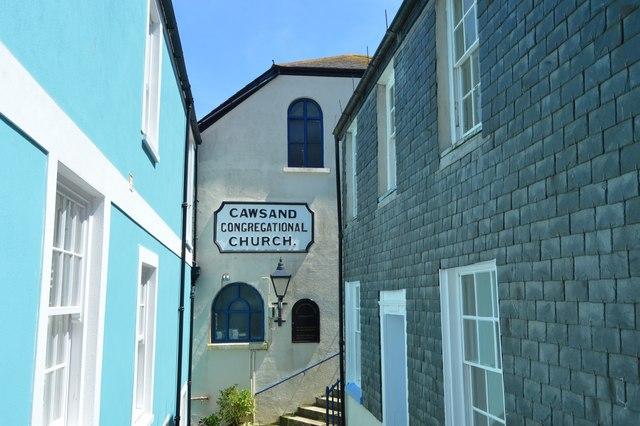St Mary & St Julian
Maker, Cornwall
The church has been dated to the 15th century, with the nave and chancel possibly of an earlier date..

Our church Fellowship dates back to 1793.
Cawsand, Cornwall
The 17th century saw a slow expansion of the village. In 1653 Rev John Deeble was ejected from the incumbency of Maker Church. Possibly this was because of antiparliamentarian attitudes as it was a Crown appointment. However, a note was made that those who left the church followed religious worship at the Meeting House in Cawsand. This is the first reference to the probable origins of this church.
The 18th century was the peak period for smuggling and the village was the centre of this activity in which many people were involved. Many houses, rather than cottages, were built around 1750. The village was prosperous, for in addition to smuggling, it victualled the ships that anchored in Cawsand Bay where they were sheltered, and from where they could usually sail.
A conveyance dated 9th May 1792 attests the purchase of the Fort for £63. An Agreement dated 28th May 1792 is for the building of a new Meeting House for £220. The fort purchased was one of those made redundant in 1779. The cannon embedded in the wall of the sea defence adjacent to the church is much bigger than a 12 pounder.
The fact that the money for the purchase of the site and the building of the new Meeting House was readily available clearly indicates a considerable body of worshipping people who had been meeting in an older building. The new Meeting House at Cawsand opened on 19th July 1793, with William Read as Minister of the Gospel.
Little is known about the original building but it is thought that the church was built on an east/west line, long and narrow, with a high pulpit at the eastern end with a spiral staircase.
It is probable that the south wall is partly original but the present structure was essentially completed in 1884. The new church was wider and higher and had a gallery. There was a large window in the eastern end, facing the sea. Pews had doors and cards to identify pew holders who paid pew rents. The cellars beneath were developed into the existing hall. The cost was £625. The ironwork came from the Sun Foundry of George Smith at 64 Port Dundas Road, Glasgow and shows classic Art Nouveau design features.
The 20th century saw the east window removed and an organ loft built as a tower extension.
The 21st century saw the church in such decline that it was staggering towards permanent closure. In August 2000 Revd Jill Stephens and her husband George camped in the church, opened the doors and invited people to talk about the future. Considerable refurbishment and development have taken place and we are now working hard to lead the church forward as a team.
Maker, Cornwall
The church has been dated to the 15th century, with the nave and chancel possibly of an earlier date..
Torpoint, Cornwall
Built in 1795 this Weslyan Chapel is now Grade II listed. It has had a long and useful life, providing a school in the early 1900's for Torpoint's children.
Stoke Damerel, Devon
One of the oldest churches in Plymouth, Devon.